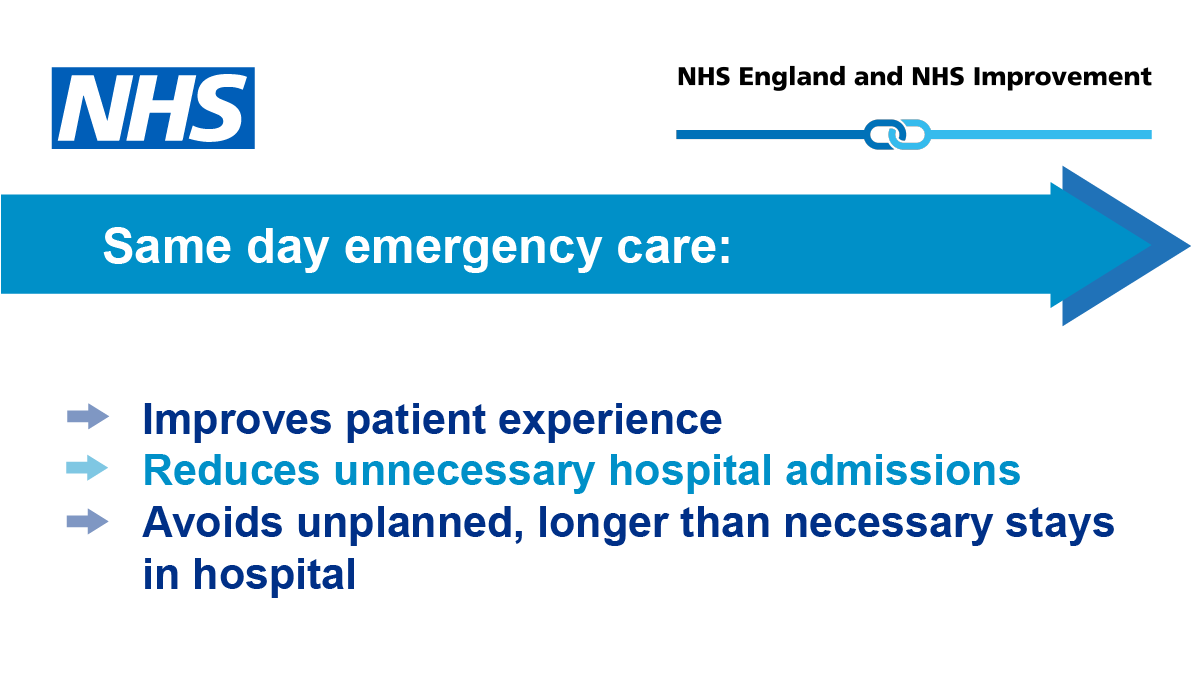For some years now clinical teams in the UK have been changing the paradigm of acute illness management. When I was a young doctor all patients with a ‘serious’ illness would be admitted to hospital. A typical take in medicine, paediatrics and O&G would include pneumonia, ?SAH, febrile convulsion, D&V, and early pregnancy bleeding. Nowadays, our ability to better risk stratify such illnesses, together with senior decision making and front-loading of investigations enables us to safely manage many such patients without admission. This change in practice has been driven both by design and necessity. With fewer acute beds available than ever before the NHS is dependent upon such expert decision making to ease bed pressures. Patients, of course, are usually relieved to be managed without admission to hospital. In particular elderly patients value their independence highly; residing in their usual place of residence is important to them psychologically as well as reducing the iatrogenic harms of de-conditioning.
Emergency Departments have developed Clinical Decision Units and Acute Physicians have created Ambulatory Care Units with recent data suggesting that the combined effect of these units is to reduce the numbers of acute adult admissions by 20%; but some sites already achieve considerably higher rates of SDEC activity. It is for these reasons that the NHS England Long Term Plan published in January sets out an explicit trajectory to increase the contribution of SDEC ‘from a fifth to a third’ of the acute take.
As ever clinical innovation is ahead of our data and recording structures; in consequence we face a number of ‘known unknowns’ which include the total quantum of SDEC work, the remuneration each trust does (or doesn’t) receive for such activity, the case-mix receiving SDEC and the skill-mix delivering it!
Whilst service development is always best done by enthusiasts – clinical and managerial – working collaboratively at local level – these key questions must be adequately answered by various national teams if we are to realise the full potential of SDEC.
Innovation in pathway and process development is the common feature of SDEC which is now extending its remit into surgical conditions such as acute RUQ pain. Linked to these new ways of working are new skill-mix options and solutions. Many sites have been eager to incorporate advanced nurse practitioners, physician associates, elderly care nurse specialists and the allied health professions into the teams delivering SDEC.
So this year we have three main work streams. Firstly we are running nine regional workshops to raise awareness of the opportunities and expectations and most importantly to listen to the participants, noting their concerns and challenges. Secondly we are collaborating with the Ambulatory Emergency Care Network to provide bespoke support to many trusts across each region via their Accelerator Programme. Thirdly, working with tariff teams and coding experts we are working to create data capture systems fit for our new purpose. These latter changes will require every trust to change the way SDEC activity is recorded and the implications of such changes will disrupt many of the historical counting and payment systems used daily in the NHS. It is for this reason that much of this has been parked in the ‘too difficult’ basket for too long. Eventually though reality is irrepressible and in 2019 the NHS will begin to align its managerial tools with best clinical practice.
Dr Cliff Mann
National Clinical Advisor
NHS England/Improvement


